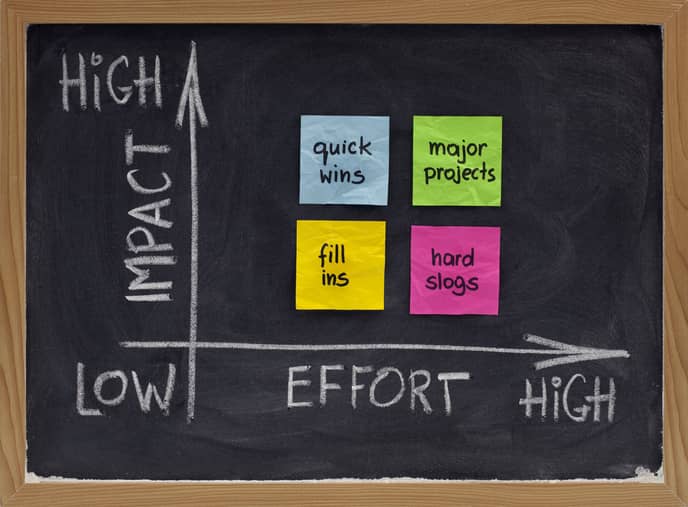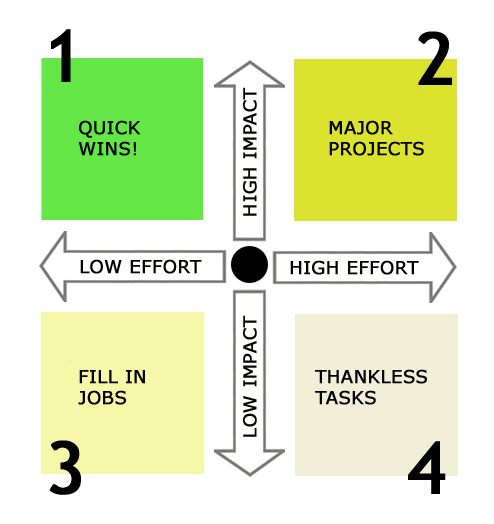People who want to become the best at something all do the same thing, whether it’s painting a portrait or developing a customer call center. They look for inspiration and guidance from the best. That’s the main idea behind the practice of benchmarking.
Six Sigma focuses on process improvement. A huge part of that process is identifying areas where a company is having problems, measuring performance and then finding ways to improve it. But what should be the goal the process improvement hopes to achieve? What’s the standard for performance?
Answering those questions is where benchmarking comes in. It gives companies the ability to turn to best-in-class companies for ideas on the standards they should strive to achieve.
Benchmarking in Six Sigma
Benchmarking in Six Sigma involves measuring data on the performance of current methods and comparing them against a standard. That standard can come from a compliance standard in the company’s industry or the standard set by leaders in the industry.
In many cases, it’s both. Project teams may benchmark their current performance against an industry standard, then measure it against the performance of best-in-class companies.
The goal of benchmarking is to create new methods or improve current processes to meet that higher standard. It’s not a one-time effort. Rather, it’s another part of continuous process improvement that the best organizations commit to if they want to stay competitive.
While companies may choose to benchmark against a competitor, in Six Sigma the majority of benchmarking is done to compare one company operation against a similar operation in companies outside the industry. For example, a tech company may measure performance in its customer service department against that same operation in a retail company known for customer service excellence.
Three Types of Benchmarking
Benchmarking is an excellent tool for measuring performance, but it’s a complex one. Project team members can contact other companies and often tour their facilities. But they need to understand what, exactly, they want to measure and the goal of their benchmarking efforts.
Typically, most benchmarking initiatives fall into one of the following categories.
Competitive benchmarking: This focuses on competitors within the company’s own industry with a goal of establishing the standards met by industry leaders.
Strategic benchmarking: This typically involves going outside the company’s industry and analyzing world-class organizations to measure their standards in areas where they excel. An example of this are companies in many industries adopting the manufacturing processes of the car company, Toyota.
Internal benchmarking: This occurs in larger companies where one area has established a high standard and wants to share its best practices with other areas of the operation.
Overview of Benchmarking Steps
Teams can benchmark areas that include strategies companies use to compete in the marketplace, techniques used in specific production or operational areas (customer service, for example, or product development), competitive positioning (as with pricing or quality standards), and operational processes.
Benchmarking goes through a series of steps. They include the following:
Measure current practices: Teams find a problem area, then identity and measure key performance indicators. They should prioritize the most important areas where making changes will strongly impact the company’s bottom line.
Research best practices: After measuring performance of their own processes, businesses then select an industry standard or a world-class organization that sets the standard in the area they want to improve (such as customer service, sales, marketing, manufacturing processes, etc.).
Collect data: Teams analyze the best practices of leading companies by collecting data on what they do. This phase also may include a visit and tour of the standard-setting operation.
Compare performance: Using data from the world-class organization, they can compare their performance. Areas where improvement is needed should become very apparent. They can make whatever changes are needed to improve performance and meet a higher standard.
There are dangers to stay aware of, as well. The primary one is to ensure that the company does not copy mistakes that the standard-setting company is making. Another is to go into the process without a clear idea of the goals, which keeps benchmarking from leading into areas where teams did not original intend to go.



